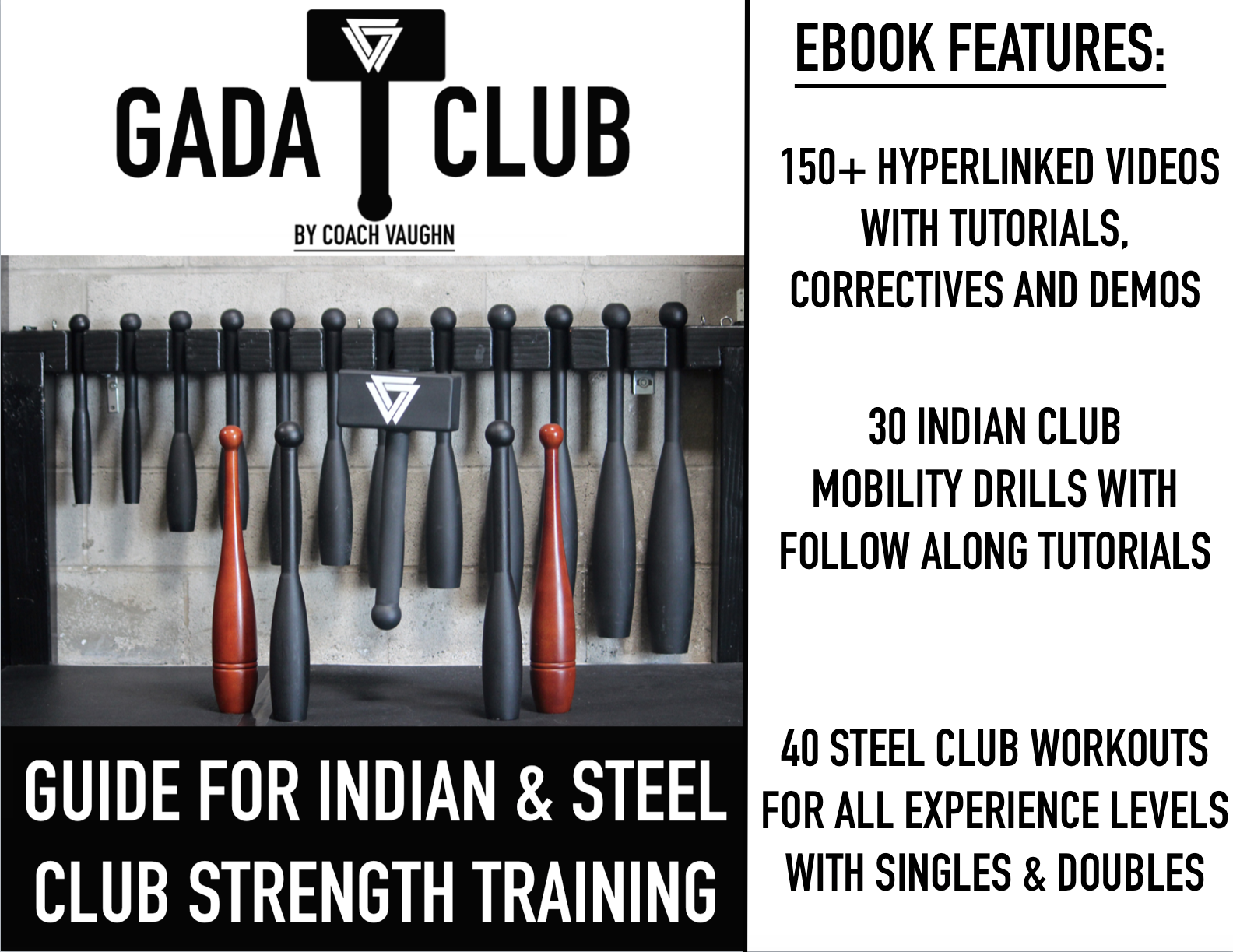Best Indian Club Drills for Shoulder Health
It’s crazy when in our younger years how invincible we think we are to injury, and it’s not until you get a serious injury do you realize you took your body’s resilience for granted. A decade ago, I learned just that playing a pickup tackle football game with friends at a local park…with NO pads. I caught a pass and a player jumped on my left shoulder as I was running and fell with my right shoulder dragging into the ground (with the player’s weight still on top of me). I got up, and could not feel my right arm as I was trying to jog it off. Once realizing something was seriously wrong…immense shoulder pain took over my entire body.
Learning to deal with a separated shoulder was a defining moment in my fitness career because it taught me how the body functions in response to stress and injury. One of the scariest moments of my life (after my shoulder somewhat healed months later) was when I just finished a heavy dumbbell pressing workout and felt as if my entire right side was shutting down. While it wasn’t a stroke, a nerve was getting impinged in my shoulder and causing serious numbness. After that day, I decided not to lift any heavy loads until I had fixed my problem. I refused surgery because I knew too many people who ended up worse after becoming addicted to medication to deal with the constant pain.
So when I found indian clubs to input into my new routine — I got great results being able to press heavy again without any pain or numbness. My body thanked me every time I gave it the real medicine it needed…proper movement. Dr. Perry Nickelston (Stop Chasing Pain) asks: “What do ALL injuries have in common? You don’t move the same after.” So here are five indian club drills that can not only help your shoulders, but your entire body to be more resilient and moving better.
Indian Club Single Mills:
What I love about the indian clubs is that it’s the perfect warm up tool to teach how the lats need to retract back in the shoulders — not using the traps (shrugging). The front rack position is a common setup position with barbells and kettlebell lifting for presses and front squats. Mills are the main move to learn and progress in different speeds. What makes indian clubs unique is only a 1-2lbs pair is needed. The focus should NEVER be on making them heavier, but speeding the indian clubs up through with more acceleration and velocity will equal more mass. So it’s key to go slow first (finding your path) and THEN adding speed once your joints and tendons are ready for it. Performing the mill requires smooth motion from the shoulders and elbow to circle back in & out. These internal/external ranges of motion are something only the indian clubs can do.
Indian Club Double Clock Reaches:
A great drill to open and pry shoulders. Anyone who’s had shoulder issues, knows getting back full overhead arm extension is tough. Clock reaches teach symmetry and even flow for the shoulder girdle. It’s critical to NOT rotate your torso into your low back and make the shoulders do most of the work (not shrugging). Think you want to “connect the lines” first, and add speed to the clock reach.
Indian Club Double X-Pattern Swing:
A great explosive drill to teach the hips to ballistically hinge with a flat back, and teach the arms how to load up for more power. This syncs the body to move as one with the clubs slamming down in and out from a X-pattern setup position. Think a swing is a jump that doesn’t leave the ground and this will create more & more power output for each rep. Be sure to switch your X-pattern position with each rep.
Indian Club Double Half Kneeling T-Spine Crosses:
The average american sits 7-8 hours per day. So poor posture habits with tight hip flexors needs to be corrected. This drill is inspired from Dr. Mark Cheng’s Prehab-Rehab program. It helps realign the shoulder girdle with the spine (t-spine) as one in the half kneeling position. What’s also key about this drill is to create as much spinal rotation as possible without the hips giving stability. You’ll notice your front knee will want to knee valgus out and the rear foot will want to crash in — resist by rooting the feet down to have more stability in the hips.
Indian Club Single Striking Mills:
Pivoting the feet is a highly neglected skill to create better striking power. Imagine punching someone, not using your hips or feet…yeah, NO power. Now punch with your feet pivoting in the direction the hips are rotating — much higher power output. However, notice how the indian club makes this more fluid by adding a push/pull effect for the upper body for even more power — having the athletic qualities of a sword strike or football/baseball throw.
These indian club drills have been a part of my warm up routine for years. They can help rid a lot stiffness in the body and shoulder pain from poor posture patterns. As we get older, we must gain new knowledge to combat these tough lessons in life (like when I was a young & dumb playing football with no pads and getting a separated shoulder). While indian clubs are not common, you can purchase a pair made out of wood (like mine in the demos) or polyurethane online.
Be sure to check out my new ebook program, GADA Club Guide for Indian & Steel Club Strength Training. Features over 30 indian club warm up drills and 40 workouts steel club workouts (with 150+ exercises with all private hyperlinked video content). You can get the new program HERE:


